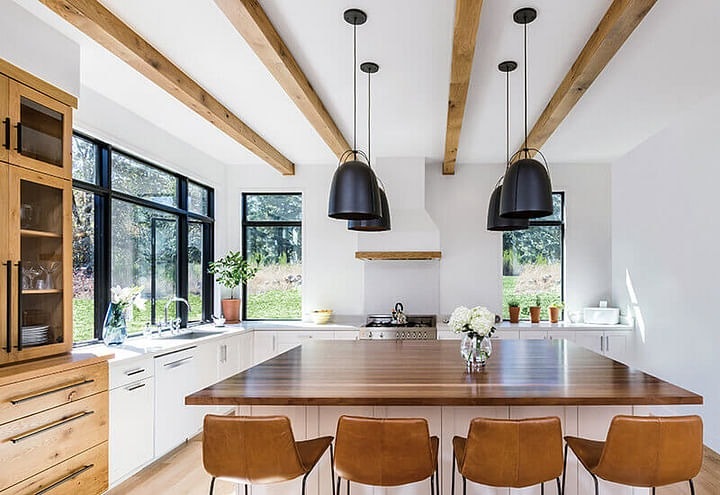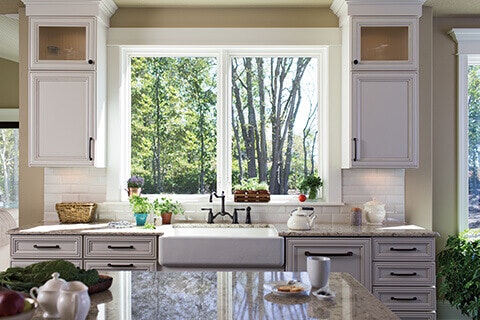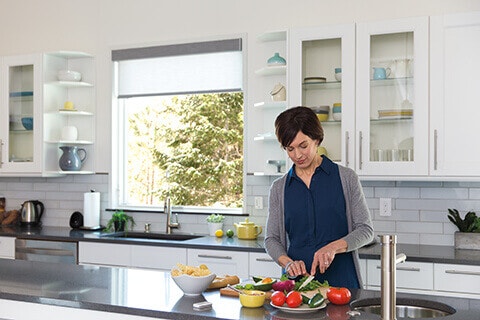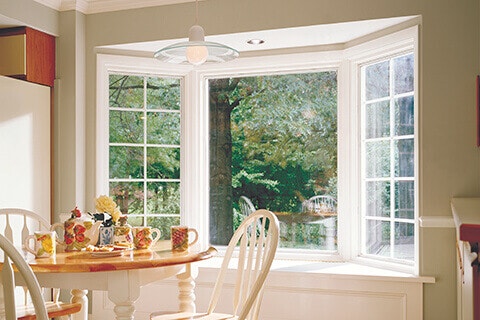Finding the Right Kitchen Windows for Your Home
Posted
on March 15, 2017

Like so much in your kitchen, windows play a role that’s equal parts practical and aesthetic. A big, beautiful window can turn an otherwise subdued, functional kitchen into something incredible. On the other hand, a practical, small window in the right place can offer just the right amount of lighting to pull a great kitchen together. To help you choose the best possible replacement windows for your kitchen, we’ve put together this post explaining the roles, requirements, and styles you’ll need to know.
The Role of Windows in the Kitchen
Windows in a kitchen have a similar role to any other room in your house: they provide light and ventilation as practical applications, while offering quite a degree of aesthetic flexibility. Ventilation in a kitchen allows for breeze in a room that may otherwise generate heat, but try to avoid placing windows above cooking flames. You may also want to consider other applications for windows in your kitchen such as access to outdoor window box planters, a pass-through to an outdoor dining area, or a place to view small children in the yard.
You’ll need to balance your window choice against other factors, balancing your desire for maximum light, ventilation, access and aesthetic potential with your constraints for size and style. Wall space dedicated to windows may impact space available for upper cabinets, range or other storage.
Exploring Your Options
You’ll need to consider the physical limitations of your window and how it can work within your kitchen, without sacrificing your workspace or storage. If you only have a small section of wall facing the outside, your kitchen window sizes will be limited to some portion of that space. You’ll also need to consider the location of structural supports in the walls if you’re adding a window to an area without one or expanding an existing window. If you are looking to maximize views of the outside, a larger window may be a fit for your kitchen, but consider the placement of your cabinets as a window could take up space that might otherwise be used for storage.
If you’re considering an extensive remodel it’s a good idea to have a contractor come through to consult on possibilities. Creating space for a kitchen window or replacing an old one can be a lot lower cost because there's only one window to replace.
Kitchen Window Styles and Materials
Now that we’ve covered the goals and limitations of windows, let’s look at options. First, styles of window popular for kitchens:

Casement Windows
These are the windows attached to the frame by hinges, which swing open like a door typically using a crank shaft. Often used in pairs to create a striking image, these are versatile and can be used in almost any space. Because casement windows crank open, they allow for maximum ventilation (a bonus in the kitchen) and can work to “scoop” the air from a passing breeze. Casement and awning windows are advantageous over double-hung windows in a kitchen when you have to reach over a sink or cabinet to operate them.


Awning Windows
Hinged at the top and opening outwards to create coverage for the opening, these are practical little windows. Awning windows are practical not only due to their size, but also because you may be able to open a window even during rain—something quite useful for a small window above the kitchen sink.
Bay or Bow Windows
These windows consist of a set creating a curve: one large central window framed by two smaller angled windows (often casement or double-hung) for a bay window, four or five similarly-sized windows in an angled curve for a bow window. Both require significant space but offer an amazing view of the outside. They also offer additional storage space for things like potted plants or herbs that might require exposure to sunlight.
You’ll also need to consider materials for your kitchen windows. Depending on how humid your kitchen gets and how close the window is to cooking spaces, it may be prudent to invest in a sturdier option than vinyl, such as aluminum-clad wood. This also gives you additional freedom in color selection and design.
Placement of Windows in the Kitchen
Kitchen windows are traditionally placed higher than windows in other rooms — 42 inches should give you room for lower cabinets, counters and backsplash. Working within the constraints of your outside walls, try to place windows to maximize access to natural light and weather, which tends to move from west to east. Windows placed on east or west walls tend to gain or lose more heat than those facing north or south.
Traditional placement of windows above a kitchen sink allows you to gaze out while cleaning up, but today’s modern kitchens offer more flexibility. Many homeowners are choosing to forgo upper cabinets in exchange for an expanded view and more open concept with additional windows.
Find out more with a free quote from your local Pella showroom. You'll be able to find the best possible match for your dream kitchen with the assistance of our wide selection and expert staff.
Schedule a free consultation to find windows and doors for your home.
